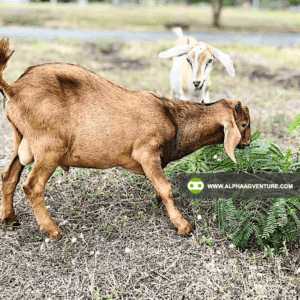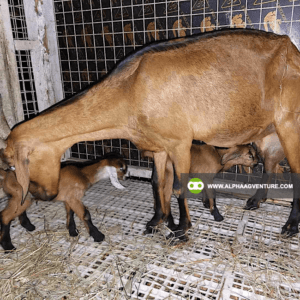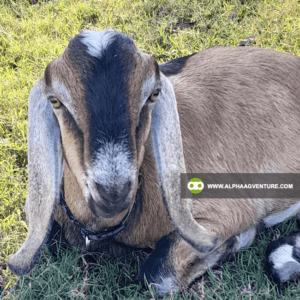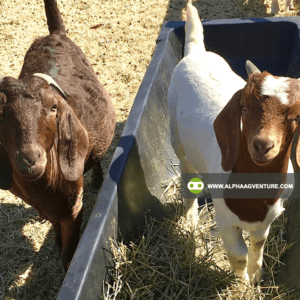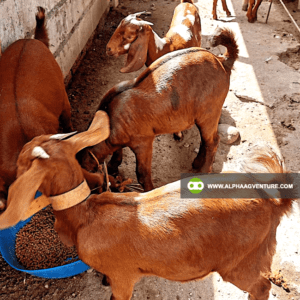When Your Buck Becomes a Problem
I know firsthand how dangerous an aggressive buck can be. One moment, he’s grazing peacefully; the next, he’s charging at me or my caretakers with unrelenting force. If you’ve ever been rammed by a full-grown buck, you understand the damage they can inflict—not just on humans but on their herd. Here in the Philippines, aggressive livestock incidents are not unheard of. Farmers and handlers have reported injuries caused by aggressive bucks, emphasizing the need for proper management strategies. While extreme cases are rare, the risk is real, especially for those of us handling breeding bucks daily. So, what can we do about it? Let’s dive into the science behind buck aggression and how I manage it effectively on my farm.
The Science Behind Buck Aggression
First, let’s be clear: aggression in bucks isn’t random. I’ve observed that it is driven by biological and environmental factors. Testosterone plays a massive role, particularly in breeding season when bucks are flooded with hormones that make them territorial, dominant, and sometimes outright dangerous. Hybrid goats often exhibit more aggressive traits depending on their lineage, while purebred Anglo-Nubians and purebred Boers, known for their strong physical builds, can be formidable when aggressive.
A study published in the Journal of Animal Science (Smith et al., 2018) found that bucks with higher testosterone levels displayed more aggressive behaviors, particularly during rut. Moreover, goats establish a social hierarchy, and the buck—if not properly managed—can view caretakers as competition. This is why aggressive bucks often direct their attacks at people who show hesitation or retreat, reinforcing the idea that they are dominant. I’ve seen this happen with my own animals, and it’s clear that proper handling techniques are important.
Documented Cases of Aggressive Bucks
To understand how dangerous an aggressive buck can be, let’s consider real-world cases reported by livestock handlers. Many farmers have experienced serious injuries, including broken ribs and deep bruises, after being repeatedly rammed by breeding bucks. In some instances, they were forced to cull particularly aggressive animals to prevent further harm. While extreme cases are rare, incidents involving aggressive rams and bucks have been documented worldwide, underscoring the importance of early intervention and proper management to ensure both human and animal safety.
Scientific Strategies to Handle an Aggressive Buck
1. Behavioral Conditioning
Bucks learn from experience. If charging leads to caretakers retreating, they reinforce that aggression works. I’ve trained my bucks by using firm handling techniques. According to Applied Animal Behaviour Science (Garcia et al., 2020), negative reinforcement (such as temporarily isolating an aggressive buck) can help reduce hostile tendencies.
- I never respond to aggression with aggression—it may escalate the behavior.
- I use consistent handling techniques to establish human dominance without violence.
- I reward calm behavior with treats or head rubs, reinforcing non-aggressive conduct.
2. Environmental Adjustments
Stress can exacerbate aggression. A study in Small Ruminant Research (Lee et al., 2019) showed that goats in overcrowded conditions exhibited more aggressive behavior.
- I provide at least 4 square meters per buck to prevent territorial disputes.
- I use solid fencing to prevent direct visual contact between rival bucks.
- I keep does separated when they are in heat to prevent excessive aggression.
3. Handling Techniques
The way we physically manage bucks also matters. I’ve seen farmhands unknowingly encourage aggression through improper handling.
- I always approach a buck from the side, not directly from the front.
- I use a halter when leading an aggressive buck to minimize head-on confrontations.
- I avoid hand-feeding aggressive bucks, as they might associate humans with food competition.
4. Medical Interventions
In extreme cases, medical options may be considered. Castration is the most effective method for reducing testosterone-driven aggression. A study in the Veterinary Journal (Johnson & Clark, 2017) found that castrated bucks exhibited 70% less aggressive behavior than intact ones. If breeding is necessary, hormone therapy may be an alternative, but it requires veterinary supervision.
When to Cull or Replace an Aggressive Buck
Not all bucks can be rehabilitated. If a buck remains dangerously aggressive despite interventions, I consider culling as a last resort. Selective breeding plays a role here. Some bloodlines are more prone to aggression, making temperament an essential selection criterion. In a commercial setup, an unpredictable buck is a liability. If safety cannot be guaranteed, I prefer to replace the animal with a more manageable one.
Enhance Your Goat Farming Expertise
Handling aggressive bucks requires practical experience. That’s why I invite you to my face-to-face Goat Farming Seminar in Manila on May 17, 2025. We’ll cover hands-on techniques for managing bucks safely, along with other essential topics in goat farming. Secure your slot today.
The Future of Buck Management
Aggressive bucks don’t have to be a permanent problem. With proper training, environmental adjustments, and selective breeding, we can raise bucks that are both productive and manageable. As with all aspects of livestock farming, science and experience go hand in hand. I’ve worked with difficult bucks before, and I know that with the right approach, we can ensure both the safety of our farmworkers and the efficiency of our breeding programs.
References
- Garcia, L. et al. (2020). “Behavioral Responses of Bucks to Human Interaction.” Applied Animal Behaviour Science.
- Johnson, T. & Clark, M. (2017). “Effects of Castration on Aggression in Bucks.” Veterinary Journal.
- Lee, R. et al. (2019). “Environmental Stressors and Aggression in Small Ruminants.” Small Ruminant Research.
- Smith, K. et al. (2018). “Testosterone and Dominance Behaviors in Breeding Bucks.” Journal of Animal Science.
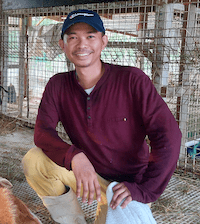
Mr. Jaycee de Guzman is a self-taught agriculturist and the founder and patriarch of Alpha Agventure Farms, recognized as the leading backyard farm in the Philippines. With a rich background in livestock farming dating back to the early 1990s, Mr. de Guzman combines his expertise in agriculture with over 20 years of experience in computer science, digital marketing, and finance. His diverse skill set and leadership have been instrumental in the success of Alpha Agventure Farms.



